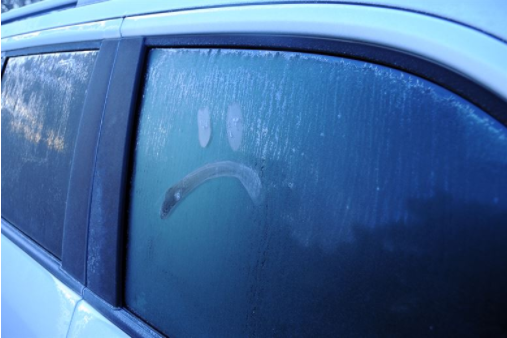Seasonal Affective Disorder: When Winter’s Got You Feeling SAD

For some Americans, the cold, dark winter months can lead to depression.
Let’s face it, winter is dreary. Waking up in the dark, watching the sun set before dinner, combating flu season, and sitting in freezing cars makes December to March a seemingly endless period of waiting for the blue skies and sunshine of spring. However, for many Americans–around 6% of adults–the winter months can be a cause of depression. This cyclical mood disorder based on climate patterns is known as Seasonal Affective Disorder, or SAD.
The main symptoms: low energy, fatigue, hopelessness, sluggishness, social withdrawal, and difficulty concentrating, are common to Major Depression, but they are linked to a specific time of year. People with SAD also tend to sleep more in the winter, have difficulty getting out of bed, crave carbohydrates, and overeat.
SAD occurs because the lack of sunlight in the winter months due to shorter days. While there has not been conclusive evidence on the neuropsychological cause of the disorder, people with SAD often have problems in the regulation of serotonin, overproduce melatonin, or have a vitamin D deficiency. Serotonin is the neurotransmitter that regulates mood and melatonin is a hormone that regulates sleep cycles. Coupled with a lack of vitamin D, these abnormalities can leave people with SAD feeling constantly depressed and tired throughout the winter.
Fortunately, there are several therapies and treatments that have improved the symptoms in patients with Seasonal Affective Disorder. One common coping method is light therapy. In the mornings, when it is difficult to wake up before sunrise, a light box can be used to simulate the sunlight and can change one’s circadian rhythm so he or she gets up a little earlier. Another effective treatment is Cognitive Behavioral Therapy (CBT). CBT is a long-term solution to recurrent depressive episodes because it teaches patients to cope with the disorder themselves. Therapists will advise people on how to avoid negative thoughts, so that their moods improve. The combination of CBT and light therapy can be extremely successful in alleviating SAD symptoms. There are many small lifestyle changes that can help with SAD as well. For example, getting more exercise in the winter, meditation, or even just leaving the house more often can all improve mood. If none of the said treatments seem to be effective, a doctor may prescribe antidepressant drugs as a last resort.
Even for people who do not have the disorder, similar behavioral changes can be applied as preventative measures. Try to get natural sunlight everyday, exercise, eat whole grains and vegetables, stay social, and avoid stressful activities in the winter to stay happy and healthy.